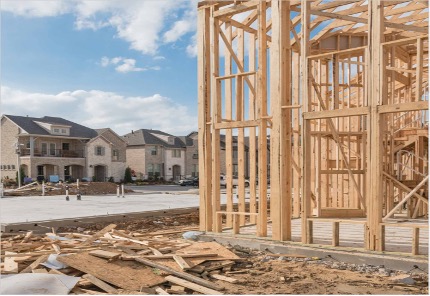Widgetized Section
Go to Admin » Appearance » Widgets » and move Gabfire Widget: Social into that MastheadOverlay zone
Issue Framing During the Housing Crisis
The views expressed are those of the author and do not necessarily reflect the views of ASPA as an organization.
By Shone Hughes
December 30, 2024

Some scholars argue that a social problem is a condition that negatively impacts many people. Nonetheless, a social problem is simply an undesirable condition unless it grabs the heartstring of many informed citizens and policymakers willing to take political action for social change. Oftentimes, social problems require government intervention to alleviate or eradicate the condition. Issue framing using images, symbols and storytelling determines the success of a condition becoming a social problem that warrants government intervention. The framing of a social problem is also implicitly and explicitly linked to government activities to address the social problem. The rationale for policy initiatives are based on the values of many people who undeniably rely on heuristics. The framing of a social problem has powerful effects that can create solution caused problems when heuristics are improperly employed.
A Half Frame
Most would agree that the U.S. is experiencing a housing crisis. While the factors contributing to the housing crisis vary by location, economists postulate that the housing crisis is largely a supply crisis. According to economists, new homes were not built to accommodate the growing population. For most metropolitan and nonmetropolitan areas, framing the housing crisis as a housing shortage issue only tells half the story. There is a supply problem of affordable housing across the nation. Eighty percent of Americans living in rural areas and 72 percent of Americans in urban areas across sex, race, gender, education, income and political affiliation perceive housing affordability as the contributing factor to the housing crisis. In 2023, 37.1 million households including those who were renting and paying on a mortgage were severely cost burden.
Solution Causing Problems
Solution caused problems are the result of incomplete information used to frame an issue. In this context, framing the housing crisis as a supply issue to deem new housing developments as the solution introduces a new problem: gentrification. Ruth Glass, a British sociologist coined the term gentrification to describe the demographic changes observed in London post-World War II. Glass observed poor residents being moved out while upper class enclaves were formed. According to the 1980 Oxford American Dictionary, gentrification is the movement of middle class families into urban areas causing property values to increase and having secondary effects on driving out poorer families.
In urban areas, competition for buildable land near city centers provides an incentive to demolish modest owner occupied and affordable housing in appreciating areas to build new homes which increases home and rent prices. The lower middle class residents are no longer able to afford housing. As lower middle class residents are displaced, the appreciating area becomes inhabited by wealthier occupants. Though gentrification is associated with urban areas, rural gentrification is a phenomenon. Rural gentrification is the process of wealthy producers and marginal middle class consumers moving into nonmetropolitan areas to prepare the space for middle class and wealthy residents, businesses and investors. Rural gentrification is rapidly increasing in areas within 40 to 100 miles from the urban center that offer green spaces, larger homes, and desirable school districts.
In 2023, in a rural town with a population of 17,555, the median cost for a three bedroom two bathroom single family home was $1,800 per month. According to the U.S. Census, the median annual family household income was $35,314. Nearly 40 percent of the population were living in poverty. While the employment rate is high, the number of minimum wage part-time positions are increasing. The surge in home prices and rent exacerbates the affordable housing crisis.
In a rural town that has a high ranking consolidated school district, four churches, and a picturesque Main Street, the population was 2,119 in 2010. Today, the rural town has a population of just over 7,000. Prior to the population increase, 2,503 new construction homes were built. At the end of the third 2024 quarter, the median home price increased by 48 percent compared to last year. The median household income went from $41,250 in 2010 to $99,063 in 2020. Gentrification affects the supply of affordable housing for long term residents including small family owned businesses. In the later stages of gentrification, middle class residents are also replaced by the wealthiest.
Author: Dr. Shone Hughes is an Assistant Professor and licensed Social Worker. Shone can be reached at [email protected].


Follow Us!